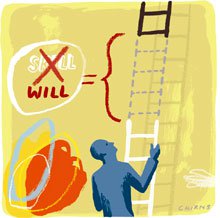Mind the Gap: The Key to Equal Achievement
The new challenge: No underprivileged child left behind.
Your content has been saved!
Go to My Saved Content.
America expects a lot from its frequently maligned public schools, but we do relatively little to make it possible for those schools to meet our expectations. Public schools are expected to educate many children whose basic needs for housing, nutrition, and health care are not met, and we blame the schools when those children do not do as well academically as more privileged children. Our politicians want schools that will enable the United States to maintain its economic and technological dominance in the world, even though we continue to pay teachers salaries that make it unlikely that our top college students will enter the profession.
We expect schools to provide students with the knowledge, understanding, and frame of mind to participate intelligently in civic life, but, increasingly, the curriculum is so focused on preparing students for state-mandated exams that there is little time for critical thinking on topics such as war and civil liberty, ideas essential to our democratic order. We call on our schools to play a role in solving a wide variety of problems that confront our nation, from global warming and substance abuse to sexually transmitted disease and race relations, yet we rarely provide the resources schools need to come close to meeting these challenges.
Given our unrealistic and unfair expectations, it is hardly surprising that schools typically disappoint and fall short of the unrealistic goals that have been set.
With adoption of the federal No Child Left Behind Act, we gave yet another responsibility to our public schools: the requirement that they produce evidence that all children are learning. As simple and reasonable as this goal might seem, it actually represents a radical departure from generations of past practice. American schools have never been expected to educate all children, and, even more importantly, they have never been called on to eliminate racial disparities in achievement. For the first time in American history, closing the racial achievement gap has been embraced as a national priority. The profound significance of such a crusade can be fully appreciated only if one considers that for most of America's history, racial differences in achievement were presumed to be natural (that is, rooted in innate ability), unalterable, and even acceptable.
I spend a great deal of time working with school districts around the country to close this gap. Though I rarely question the sincerity of those who lead these efforts, I have come to understand the reason some schools succeed in closing, or at least reducing, the racial disparities in achievement while the overwhelming majority fail: It has less to do with skill than with will.
Schools such as Edison Elementary School, in Port Chester, New York, Henshaw Middle School, in Modesto, California, or Boston's Fenway High School provide proof that it is possible to educate poor children of color. These schools don't possess a secret curriculum or extra resources; what sets them apart and makes them unique is the dedication and commitment of the educators who work there and the purposeful approach they take in meeting the needs of the students they serve.
Of course, there is more to it than that. In the best schools, where all children achieve regardless of race or class, several strategies are typically in place, including a commitment to engage parents as partners in the educational process, a plan that details explicit roles and responsibilities for parents and educators, strong instructional leadership focused on a coherent program for curriculum and instruction that teachers support and follow. Also present is a willingness to evaluate interventions and reforms to ensure quality control, a recognition that discipline practices must be linked to educational goals and must always aim to reconnect troubled students to learning, and a commitment to finding ways to meet the nonacademic needs of poor students.
You could add to the list, but these are the main strategies identified in the research literature. And when this combination of ingredients can be brought together on a sustained basis, it is amazing what poor and disadvantaged children can accomplish.
Ultimately, it is the beliefs of educators that determine whether gaps in achievement will close. Where educators refuse to blame others for low achievement and accept responsibility for their role in student accomplishment -- or lack of it -- children benefit. Kids know when the adults who teach them care about and believe in them. They respond by displaying the qualities so essential to school success: self-motivation, self-discipline, and resilience. The fact that schools such as Edison, Henshaw, and Fenway are able to produce such students is further proof that the problem is not the kids or their parents, but the schools we send them to.
Credit: Brian Cairns